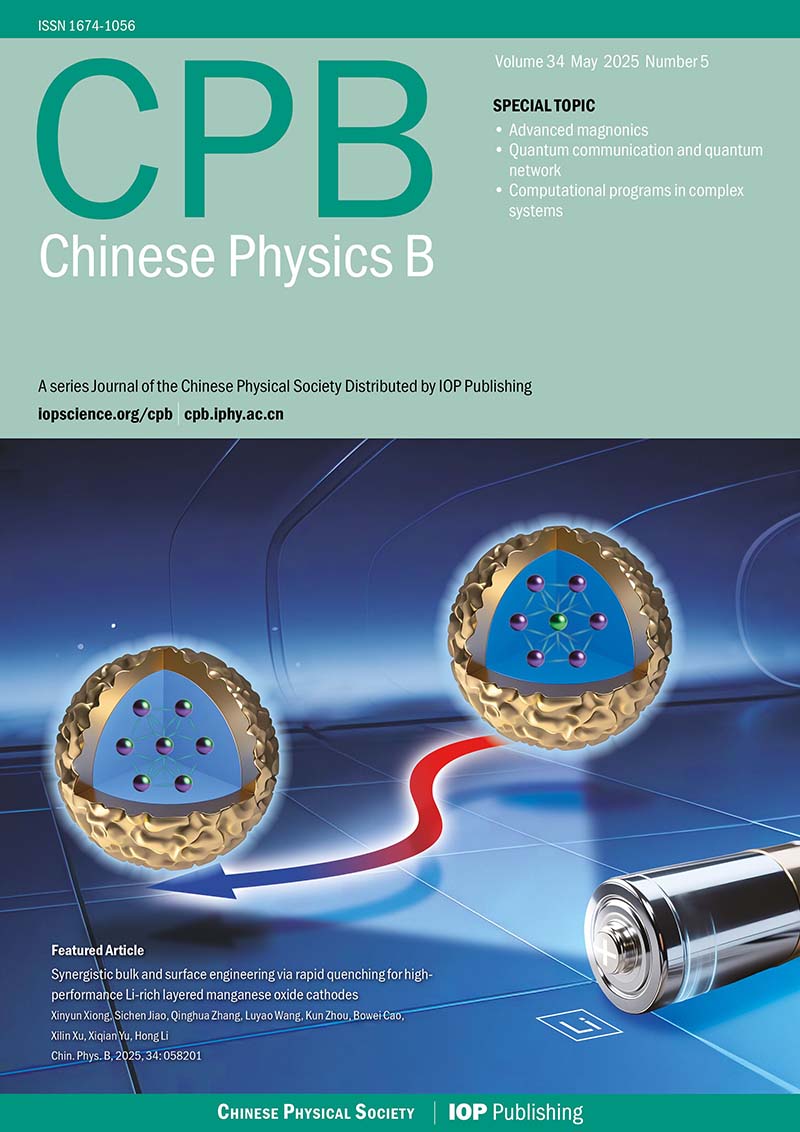|
Goldsmid H J et al. 2010 Introduction of Thermoelectricity (Heidelberg, Germany: CRC press)
Google Scholar
Pub Med
|
|
Rowe D M E 1995 CRC Handbook of Termoelectrics (Springer)
Google Scholar
Pub Med
|
|
Pei Y, Shi X, LaLonde A,Wang H, Chen L and Snyder G J 2011 Nature 473 66
Google Scholar
Pub Med
|
|
Zhu H, Zhang B, Wang G, Peng K, Yan Y, Zhang Q, Han X, Wang G, Lu X and Zhou X 2019 J. Mater. Chem. A 7 11690
Google Scholar
Pub Med
|
|
Hung N T, Hasdeo E H, Nugraha A R T, Dresselhaus M S and Saito R 2016 Phys. Rev. Lett. 117 036602
Google Scholar
Pub Med
|
|
Hung N T, Nugraha A R T, Hasdeo E H, Dresselhaus M S and Saito R 2015 Phys. Rev. B 92 165426
Google Scholar
Pub Med
|
|
Gong Y, Zhang S, Hou Y, Li S, Wang C, Xiong W, Zhang Q, Miao X, Liu J, Cao Y, Li D, Chen G and Tang G 2023 ACS Nano 17 801
Google Scholar
Pub Med
|
|
Tao P, Guo H H, Yang T and Zhang Z D 2014 Chin. Phys. B 23 106801
Google Scholar
Pub Med
|
|
Guo H H, Yang T, Tao T and Zhang Z D 2014 Chin. Phys. B 23 017201
Google Scholar
Pub Med
|
|
Song H D, Sheng D, Wang A Q, Li J G, Yu D P and Liao Z M 2017 Chin. Phys. B 26 037301
Google Scholar
Pub Med
|
|
Qi X L and Zhang S C 2010 Phys. Today 63 33
Google Scholar
Pub Med
|
|
Hasan M Z and Kane C L 2010 Rev. Mod. Phys. 82 3045
Google Scholar
Pub Med
|
|
Sun Y, Chen X Q, Yunoki S, Li D and Li Y 2010 Phys. Rev. Lett. 105 216406
Google Scholar
Pub Med
|
|
Dong Q X, Ruan B B, Huang Y F, Wang Y Y, Zhang L B, Bai J L, Liu Q Y, Cheng JW, Ren Z A and Chen G F 2023 Chin. Phys. B 32 066501
Google Scholar
Pub Med
|
|
Xu Y, Gan Z and Zhang S C 2014 Phys. Rev. Lett. 112 226801
Google Scholar
Pub Med
|
|
Hasdeo E H, Krisna L, Hanna M Y, Gunara B E, Hung N T and Nugraha A R T 2019 J. Appl. Phys. 126 036602
Google Scholar
Pub Med
|
|
Gaffar M, Wella S A and Hasdeo E H 2021 Phys. Rev. B 104 205105
Google Scholar
Pub Med
|
|
Takahashi R and Murakami S 2010 Phys. Rev. B 81 161302(R)
Google Scholar
Pub Med
|
|
Zhang R W, Ji W X, Zhang C W, Li S S, Li P and Wang P J 2016 J. Mater. Chem. C 4 2088
Google Scholar
Pub Med
|
|
Zhou L J, Shao B, Shi W J, Sun Y, Felser C, Yan B H and Frauenheim T 2016 2D Mater. 3 035022
Google Scholar
Pub Med
|
|
Bardeen J and Shockley W 1950 Phys. Rev. 80 72
Google Scholar
Pub Med
|
|
Kresse G and Furthmuller J 1996 Phys. Rev. B 54 11169
Google Scholar
Pub Med
|
|
Kresse G and Joubert D 1999 Phys. Rev. B 59 1758
Google Scholar
Pub Med
|
|
Blöchl P 1994 Phys. Rev. B 50 17953
Google Scholar
Pub Med
|
|
Wang S K, Pratama F R, Ukhtary M S and Saito R 2020 Phys. Rev. B 101 081414(R)
Google Scholar
Pub Med
|
|
Mostofi A A, Yates J R, Lee Y S, Souza I, Vanderbilt D and Marzari N 2008 Comput. Phys. Commun. 178 685
Google Scholar
Pub Med
|
|
Madsen G K H and Singh D J 2006 Comput. Phys. Commun. 175 67
Google Scholar
Pub Med
|
|
Gooth J, Gluschke J G, Zierold R, Leijnse M, Linke H and Nielsch K 2015 Semicond. Sci. Technol. 30 015015
Google Scholar
Pub Med
|
|
Beleznay F, Bogár F and Ladik J 2003 J. Chem. Phys. 119 5690
Google Scholar
Pub Med
|
|
Hung N T, Nugraha A R T and Saito R 2018 Phys. Rev. Appl. 9 024019
Google Scholar
Pub Med
|
|
Hung N T, Adhidewata J M, Nugraha A R T and Saito R 2022 Phys. Rev. B 105 115142
Google Scholar
Pub Med
|
|
Muller G, Weiss D, Khaetskii A, Vonklitzing K, Koch S, Nickel H, Schlapp W and Losch R 1992 Phys. Rev. B 45 3932
Google Scholar
Pub Med
|
|
Daumer V, Golombek I, Gbordzoe M, Novik E, Hock V, Becker C, Buhmann H and Molenkamp L 2003 Appl. Phys. Lett. 83 1376
Google Scholar
Pub Med
|
|
Wang T H and Jeng H T 2018 ACS Appl. Energy Mater. 1 5646
Google Scholar
Pub Med
|
|
Ahmad M, Agarwal K and Mehta B 2020 J. Appl. Phys. 128 035108
Google Scholar
Pub Med
|
|
Matsushita S Y, Huynh K K, Yoshino H, Tu N H, Tanabe Y and Tanigaki K 2017 Phys. Rev. Mater. 1 054202
Google Scholar
Pub Med
|
|
Togo A, Oba F and Tanaka I 2008 Phys. Rev. B 78 134106
Google Scholar
Pub Med
|
|
Li W, Carrete J, Katcho N A and Mingo N 2014 Comput. Phys. Commun. 185 1747
Google Scholar
Pub Med
|
|
Mouhat F and Coudert F X 2014 Phys. Rev. B 90 224104
Google Scholar
Pub Med
|

 首页
首页 登录
登录 注册
注册






 DownLoad:
DownLoad: